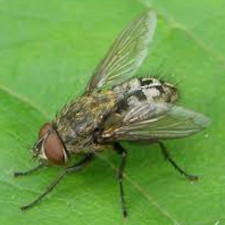 |
Cluster Flies:Cluster flies are winged insects (3-4 mm in length) and are so called because of their habit of hibernating within buildings in large numbers. They can be recognised by the short golden coloured hairs covering their body. Although they do not pose a health risk they are a considerable nuisance. Lifecycle:Cluster flies lay eggs in the soil and the developing larvae seek out earthworms to infest until they pupate and emerge in their adult fly state. Their life cycle is dependent on the weather conditions and their numbers increase during hot summers. The flies only become problematic when they enter homes or commercial properties, often in their thousands, through nooks and crannies. In especially cold weather they seek refuge within walls, roof spaces or basements where they can hibernate until the following spring. Control:In small numbers fly papers and aerosol fly killers are effective. However, larger swarms can produce a sickly odour during hibernation. Cluster flies have been known to return to the same properties year after year. Large infestations can be eradicated by a pest control specialist. |
